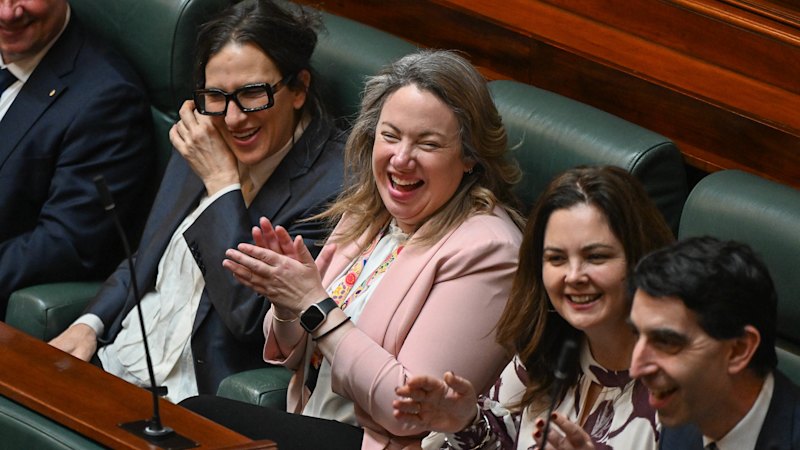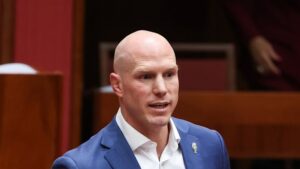
Voluntary assisted dying reform has successfully passed the lower house of the Victorian Parliament with a vote of 67 to 13. The legislation received strong support, with both the Labor Party and the Coalition allowing their members a conscience vote. This unique opportunity enabled members of parliament (MPs) to share personal stories and insights that influenced their stance on the issue. Family members and friends of individuals who suffered excruciating pain, as well as those who opted to end their lives on their own terms, were among the poignant testimonies shared during the debate.
During the late-night session, which extended until 2:07 AM, MPs were fueled by hot chips and dim sims. The atmosphere was emotional, with many expressing deep empathy and reflecting on the significance of the reform. Labor MP Emma Vulin, who lives with motor neurone disease (MND), spoke powerfully about her experience. Utilizing text-to-speech technology, she stated, “I may one day choose voluntary assisted dying. It is not about giving up; it is about retaining agency over the most personal decision any person can ever make: how they leave this world.”
As the first Australian jurisdiction to legislate assisted dying in 2017, Victoria’s current framework imposes more stringent restrictions than those in other states. The new bill aims to align Victoria’s regulations with those of other jurisdictions, permitting doctors to initiate discussions about voluntary assisted dying and extending access to patients with a prognosis of 12 months to live. The proposed reforms are now set to move to the upper house, where they may encounter more significant challenges.
In a display of camaraderie following the vote, Vulin and Health Minister Mary-Anne Thomas embraced colleagues from both sides of the aisle. Notably, at least a dozen Coalition MPs supported the reform, reflecting a shift in perspectives since the legislation’s introduction. Opposition Leader Brad Battin, who previously voted against assisted dying in 2017, shared how personal experiences, including witnessing the suffering of loved ones, had influenced his views. He noted, “Overall my position has changed on the facts of what I have done and what I have seen.”
Since the introduction of the voluntary assisted dying framework, approximately 3,500 Victorians have engaged with the process, leading to 1,683 individuals utilizing assisted dying. The free vote in the lower house allowed for extensive amendments and discussions, including concerns raised by Iwan Walters, a member of the Labor Party’s Catholic-influenced SDA union sub-faction. Walters expressed hesitations regarding potential unintended consequences, suggesting the reforms could undermine the rights of health practitioners to conscientiously object.
Many speakers emphasized the distinction between voluntary assisted dying and suicide, with Nationals MP Jade Benham sharing her own struggles. She asserted, “Voluntary assisted dying is not suicide. [VAD] is something that takes a large amount of rational thought, consideration and conversation with loved ones.”
The proposed reforms also raised issues regarding the accessibility of services, particularly in regional areas. Health Minister Thomas has advocated for allowing telehealth consultations for assisted dying, a point echoed by several MPs concerned about geographical barriers.
As the bill heads to the upper house, where Labor does not hold a majority, the outcome remains uncertain. Only a few Liberal and Nationals MPs have indicated their support, with the potential for the legislation to hinge on just one or two votes. The discussions and debates surrounding this reform reflect a significant moment in the evolution of assisted dying legislation in Australia, highlighting both the emotional weight of the issue and the complexities involved in policy-making.






